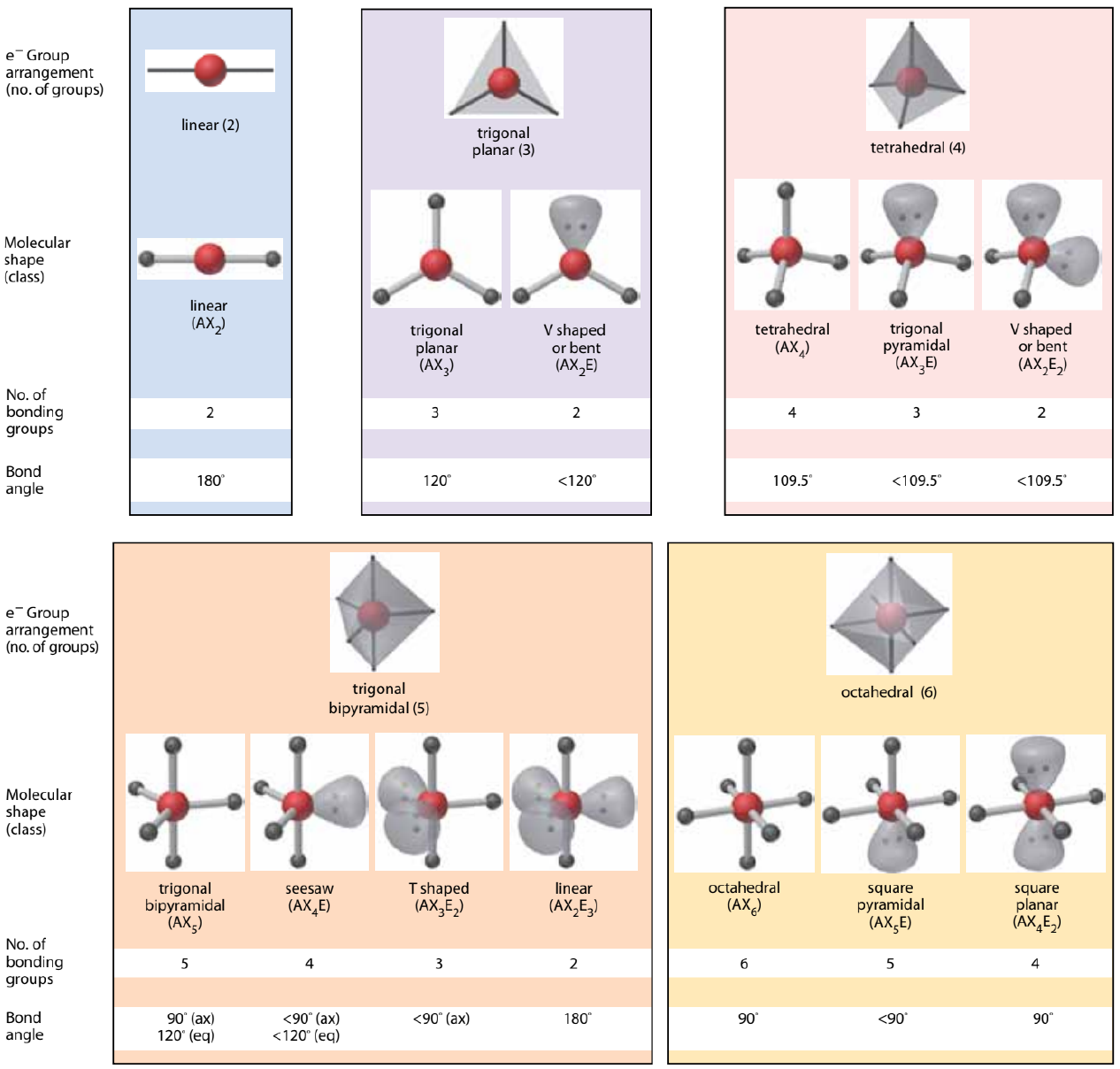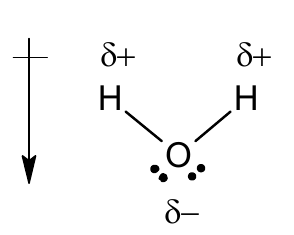Bonding¶
Types¶
Ionic¶
metal + non-metal
- hard, brittle solids
- high melting points
- solution conducts electricity
Covalent¶
non-metal + non-metal
- lower melting and boiling points
- solution doesn't conduct electricity (except it is acid or base, it reacts with water and produces salts, which conducts electricity when dissolved)
- Larger molecules -> stronger intermolecular force -> higher melting point -> solid at room temperature
Network covalent materials¶
- hard, resilient solid
- very high melting point
e.g. diamond
Metallic¶
metal + metal
- solid, often with high melting points
- shiny, silver-colored
- conduct electricity
- malleable
Lewis Structures¶
- Sum all valence electrons
- Draw skeletal structure
- Only use single bonds
- Atom with least electronegativity is usually at the center
- Use the remaining electrons to form octets, from the most electronegative to the least.
- metals > row 3 can have more than an octet
- If there is an atom remaining without an octet, create a double / triple bond.
- Exceptions: Be, B or Al (or atoms in g2 and g3) don't need an octet
- If there are an odd number of electrons, the least electronegative atom has less than eight electrons in its valence shell.
Formal Charge¶
formal charge = valence electrons an atom should have - it actually have
A lewis strucutre with formal charge closest to 0 is the most possible lewis strucutre.
Resonance¶
When multiple lewis structures are equally likely, the actual structure is the "average" of all possible lewis structures.

Average bond order: average of the order of the same bond across all possible structures. e.g. For the bottom O-N bond, average bond order = (1+2+1)/3 = \frac{4}{3}
Average formal charge: average of the formal charge of the same atom across all possible structures. e.g. For the bottom Oxygen atom, average formal charge = (-1 + 0 + -1)/3 = -\frac{2}{3}
VSEPR theory¶
Electron pairs and bonds repel each other, electron pairs repel more.

Polarity¶
- Calculate the polarity of bonds based on electronegativity
-
Treat polarity of bonds as vectors and sum them to get the polarity of the molecule
-
\delta-: slightly negatively charged
- \delta+: slightly positively charged

Created: September 19, 2021